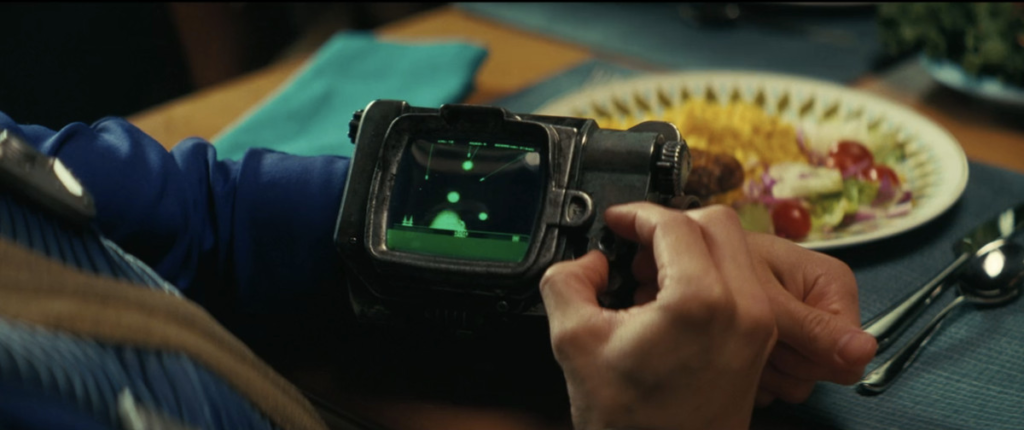Fallout is braving a whole new world — sort of. The new show from Prime Video is blazing a trail in the same continuity as that of the games. It’s a bold choice for a video game show (particularly when so many either just adapt the main plot of the game or create an entirely separate timeline to muck about in), though in keeping with the open-world RPG spirit of Fallout.
And it means that Easter eggs aren’t necessarily just little nods to the game. Sure, some of them might be. But they may also be laying the groundwork for season 2. Either way, they’re extra fun to pay attention to in the world of Fallout, which is absolutely full of them. Here’s (the ongoing list of) every Easter egg we spotted in Fallout, separated out behind spoiler warnings as necessary:
Pip-Boys and terminals
Image: Prime Video
There are a few references to the retro computer interfaces players interact with in the Fallout franchise. In the first episode, Lucy’s little brother, Norm, is goofing off playing Atomic Command — a holotape from Fallout 4 — on his Pip-Boy. Later on, he needs to hack into a Vault terminal, and it’s the same hacking minigame players are familiar with. Bad for operation security, but great for anyone who needs to uncover an eerie conspiracy.
Enemies ahoy
Some of the enemies from mainline Fallout games show up in the show to menace our protagonists. This includes raiders — in episode 1, one bloodthirsty raider menacing Chet pulls out a combat chem that looks and sounds a lot like Psycho. We also get to see our first Radroach in episode 2 when Dogmeat snacks on one (that was about to snack on Lucy).
Brother Titus of the Brotherhood encounters a yao guai, a mutated and monstrous bear that first appeared in Fallout 3 and returns in both New Vegas and Fallout 4. A super mutant also shows up on a collection of wanted posters, showing that these big green menaces are still around to some degree.
Skeleton crew

Image: Prime Video
In episode 2, Lucy explores a small, abandoned house. The shelves are littered with knickknacks, but the inhabitants of the house are all dead. Lucy observes the situation and uncovers the cause of their demise: Rat poison was added to their last supper. This scene establishes the horrors of the Wasteland, but it also feels like a nod to Bethesda’s notorious habit of littering skeletons everywhere for ambient storytelling.
Refreshing beverages

Image: Bethesda Game Studios
Nuka Cola shows up at various points in the show, which makes sense, as it was the most popular fizzy beverage before the bombs dropped. In episode 3, we can also spot an advertisement for Sunset Sarsaparilla, a New Vegas beverage with a very annoying side quest related to collecting Sunset Sarsaparilla caps.
Later in the episode, the Ghoul encourages Lucy to drink filthy, stagnant water, her rad counter clicking wildly as she desperately quenches her thirst. Slurping down nasty water is basically a rite of passage for Fallout fans.
The inhabitants of Vault 33 find out that their water chip is broken — similar to how the first Fallout begins with a Vault’s water chip breaking, kickstarting the events of the entire franchise. It’s like poetry; it rhymes.
Reclamation Day
Lucy is shaken by seeing so many people above the surface because she was raised to believe in Reclamation Day, when the Vaults would open and her people would come to recivilize the world. She’s surprised to find it’s already been settled, and new wars have erupted between new societies. Reclamation Day is also a major part of Fallout 76, with the inhabitants of Vault 76 entering Appalachia to resettle the land.
Red Rocket
The Red Rocket is a familiar brand of truck stops and gas stations that shows up in Fallout 3, Fallout 4, and Fallout 76. Sure enough, there’s one in the Prime series as well, and the Ghoul finds a trusty German shepherd there. The player in Fallout 4 also finds their German shepherd companion outside a Red Rocket station, so there’s a parallel there. Sure enough, shortly after this scene, the Ghoul calls the dog Dogmeat. That’s the dog name we’re all used to from the Fallout games, and that makes it canon in the show, too.
Radio broadcasts
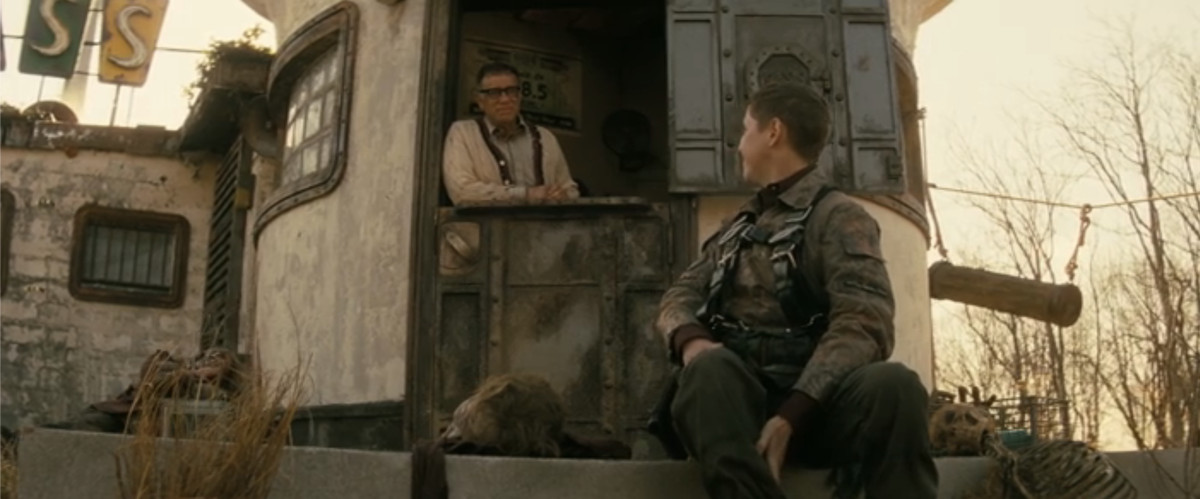
Image: Prime Video
Is it even a Fallout if there’s not a radio station broadcasting out to the Wasteland, staffed by an eccentric host? Fred Armisen plays a radio host obsessed with the technicalities of music and eager to dish about the ins and outs of sound quality to anyone who stumbles by. It seems that if there’s a post-apocalypse, there’ll always be someone who emerges from the ashes to start their own radio station.
The origins of Vault Boy
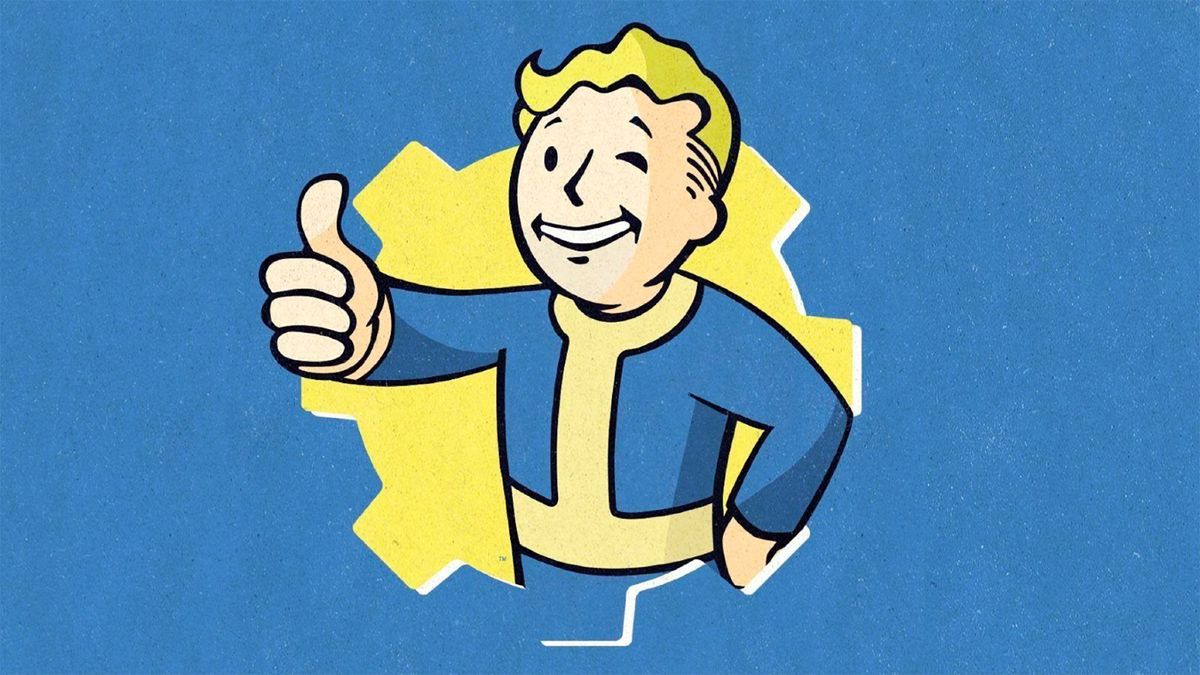
Image: Bethesda Softworks
As promised, Fallout delivered on giving us the backstory of Fallout’s peppy Vault Boy mascot. It even manages to reference fan theories about the thumbs-up.
The more spoiler-y Easter eggs
[Ed. note: These Easter eggs involve spoilers for later episodes — read on only if you want to know!]
The Commonwealth
Early on, Fallout fans may notice Elder Cleric Quintus reference “the Commonwealth,” which serves as the setting for Fallout 4. This is just the beginning of tie-ins to the video games, and there are plenty of lore-heavy Easter eggs that will likely pay off in season 2.
The lead farmer’s uniform
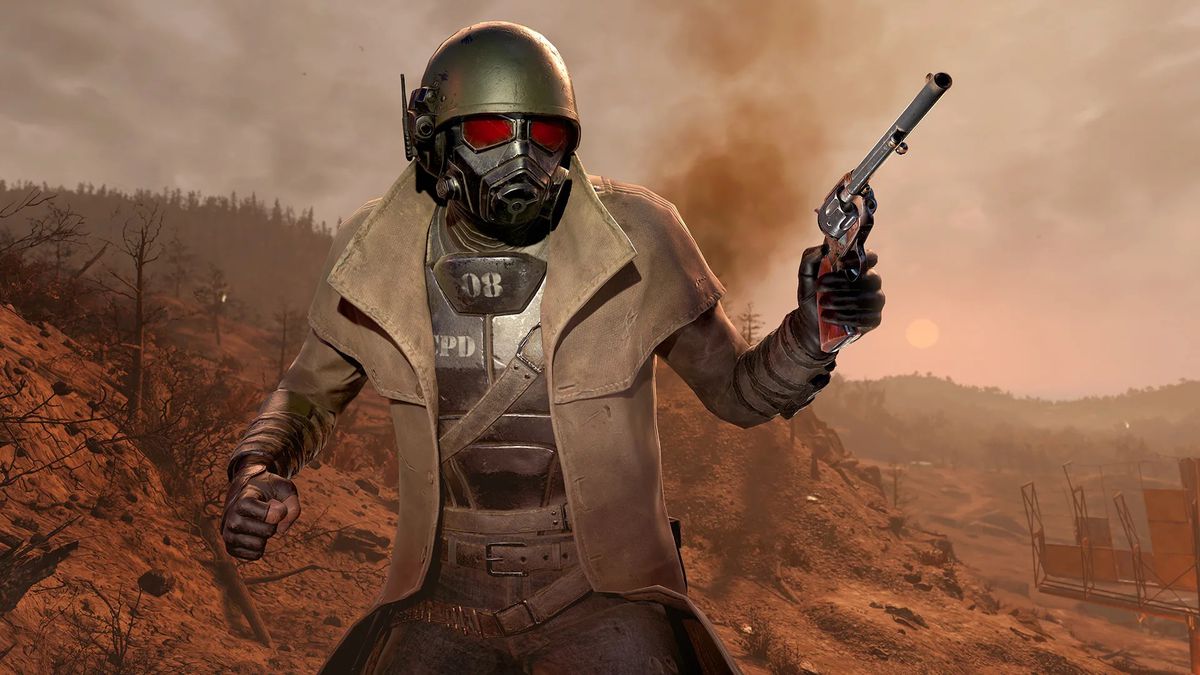
When the Ghoul goes to menace a lead farmer for information, the lead farmer greets him in the same Ranger Armor Outfit that fans will be familiar with from New Vegas.
As another fun Easter egg, the lead farmer actually lives in a residence that the player can build for their settlements in Fallout 4.
Shady Sands
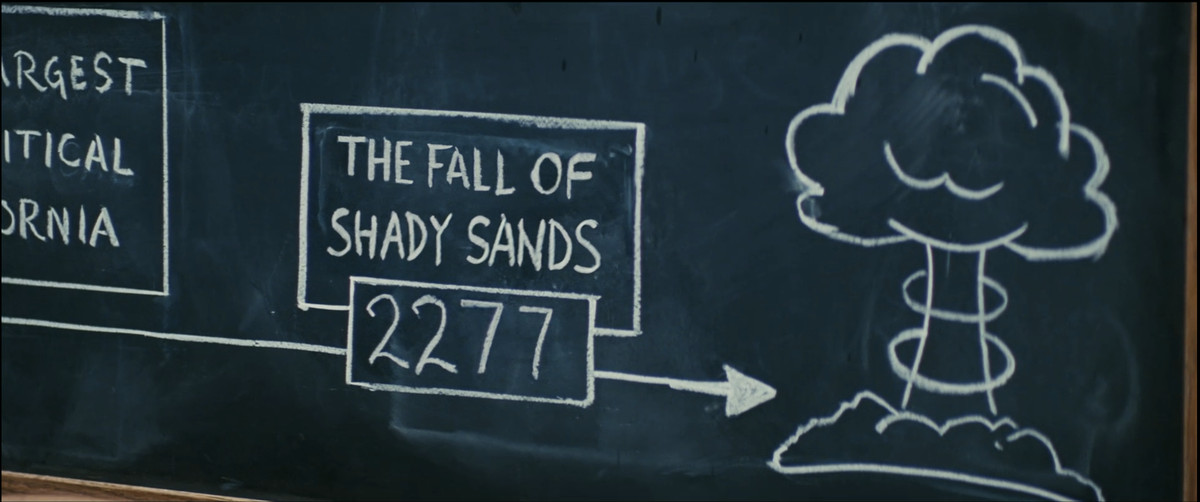
Image: Prime Video
Shady Sands is the very first settlement the Vault Dweller finds in the first Fallout, and it served as the first capital of the New California Republic. We learn that it was nuked off the map, though we don’t know by whom. A chalkboard in Vault 4 shows us a few of the events, but we’re not given much context — though we do learn Maximus is a survivor of the attack.
The destruction of Shady Sands is a massive deal, and explains why the NCR presence is so minimal through the map — based on the events of New Vegas, one would assume that this region would be fully NCR territory. It seems that the NCR’s diminishment has allowed both the Brotherhood and the Enclave to thrive.
The corporate council
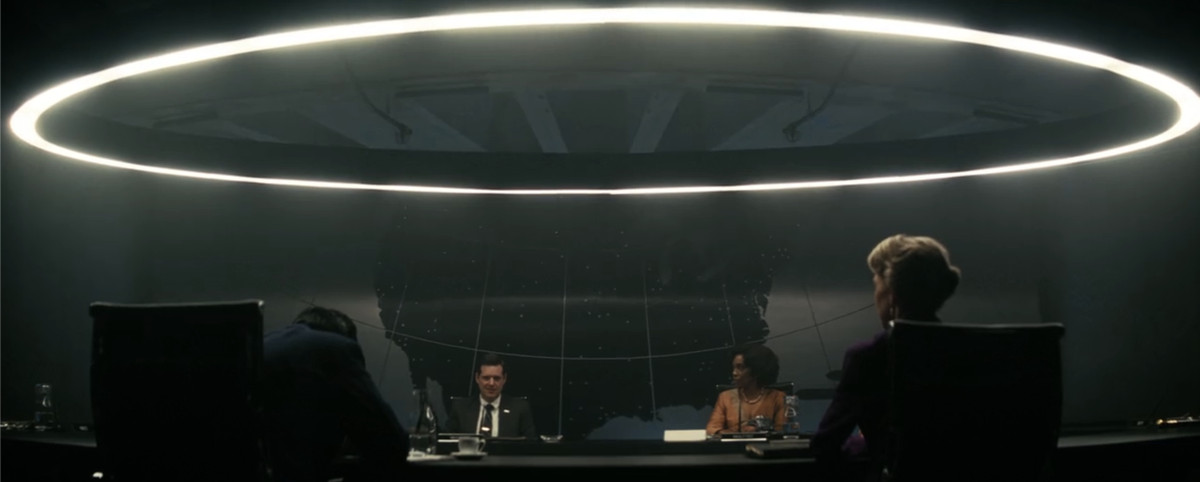
Image: Prime Video
In the final episode, we see a collection of corporate heads meet to discuss the coming apocalypse and their financial strategies. The conference has Robert House in attendance for RobCo, as well as a representative of the Big MT. New Vegas fans will recognize both of those names immediately — Mr. House is the mysterious entity who rules New Vegas, and the Big MT is the scientific dystopia at the center of the DLC pack Old World Blues.
Hank’s PIN
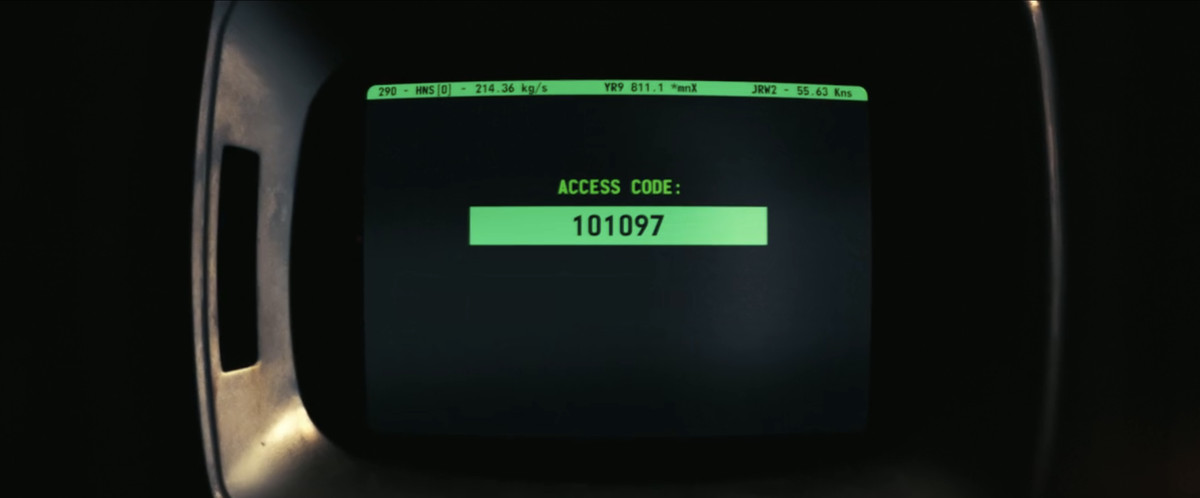
Image: Prime Video
The number Hank types in at the NCR compound is 101097 — a callback to the original Fallout’s release date, Oct. 10, 1997.
New Vegas, baby!
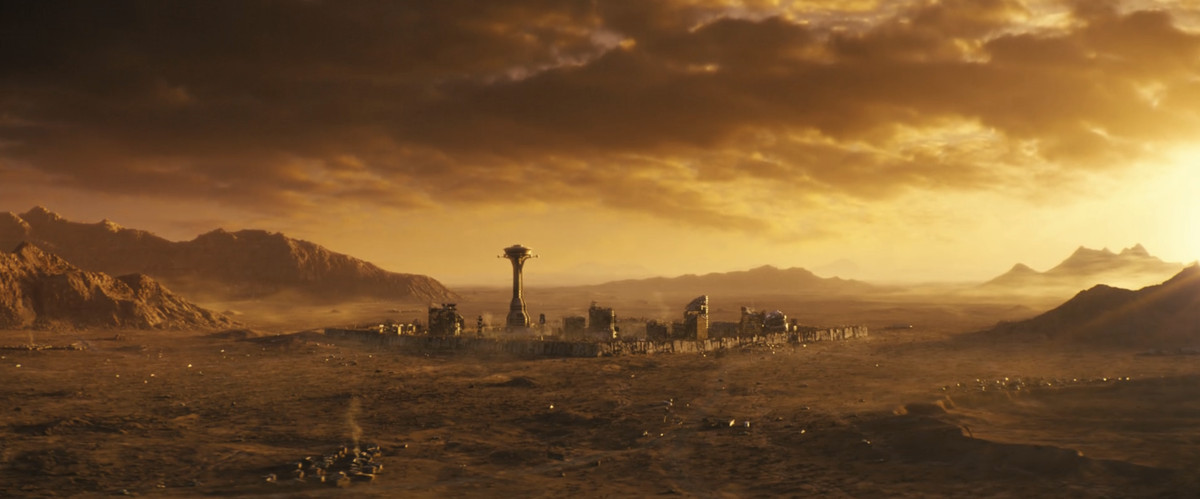
Image: Prime Video
The final shot of season 1 is the settlement of New Vegas, and as an extra tease, we can spot the skull of a Deathclaw. Deathclaws are one of the nastiest enemies in the entire franchise, and the city of New Vegas is rich with intrigue — so it’s an excellent way to tease season 2.

